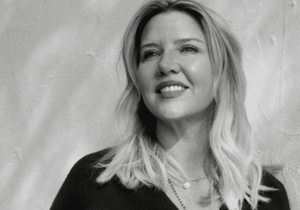A Letter for International Day of Peace
Have you noticed how the stories you consume each day shape your sense of peace, hope, or fear?
International Day of Peace reminds us that peace flows as the presence of wisdom, care, and beauty in how we meet whatever arises. Today and always, your way of being is your contribution to the garden we're growing together.
Right now, as you read this, between 500 million and 1 billion people—1 in 8 to 1 in 15 humans—are actively living with the immediate impact of violence. They are ducking bombs in Ukraine, grieving murdered family members in Gaza, fleeing civil war in Sudan, hiding from abusive partners, or sitting in prison cells for their political beliefs. The rest of us are watching it happen in real time. Never before has human suffering been so immediately accessible. We watch livestreamed bombings during morning coffee. Children wave at drones seconds before those same drones kill them, and the video reaches our screens faster than humanitarian aid reaches their neighborhoods. We witness it, feel momentarily horrified, then swipe to the next video, often upregulated and disempowered. We are becoming numb to the extraordinary. The sheer volume of suffering has created a baseline of accepted brutality that would have been unthinkable to previous generations. The gap between our intellectual understanding and our embodied response has become a chasm.
We also talk about the violence happening "out there"—in war zones, in other people's homes, in distant conflicts. But there's another kind of violence we rarely acknowledge: the violence living inside our own consciousness, accumulated through decades of consumption.
Our minds have become repositories for all the violence we've witnessed, often involuntarily:
-
Every war movie, every thriller, every "true crime" series
-
News footage of bombings, shootings, disasters playing on loop
-
Video games where killing is entertainment
-
Social media feeds filled with outrage and conflict
-
Family stories of trauma passed down through generations
A child today has witnessed more graphic violence by age 10 through screens than most humans in history experienced in their entire lifetimes. We've been marinating in trauma content and calling it entertainment, news, or "staying informed."
This violence doesn't just pass through us—it takes up residence:
-
Our nervous systems don't fully distinguish between witnessed and experienced trauma
-
We carry the activation patterns, the hypervigilance, the numbing
-
Our baseline for "normal" gets recalibrated to include constant threat
-
We develop tolerance for violence that would have horrified earlier versions of ourselves
The unconscious programming runs deep. We've been conditioned to expect violence as inevitable. Our brains have been trained to find conflict entertaining. We've normalized the adrenaline hit of fear-based content. Violence becomes the default solution in our imagination.
Every violent image we've consumed requires energy to process, creates stress hormones, activates our fight-or-flight systems. We're walking around with the accumulated residue of thousands of violent stories and wondering why we feel anxious, disconnected, reactive.
No wonder anxiety and depression rates are skyrocketing. No wonder people feel so disconnected. No wonder conflict feels so normal. We've been feeding our consciousness a steady diet of violence since childhood, then trying to have peaceful dinner conversations with our families.
It's staggering when you really consider it—the sheer volume of violence our minds have processed. Thousands of deaths, explosions, assaults, betrayals witnessed through screens. Countless hours of content where problems are solved through force, where might makes right, where revenge is justice.
Our processors are overloaded with trauma that isn't even ours, carrying the imprint of suffering we've never directly experienced but have absorbed nonetheless.
This is why personal peace practice is so essential. We're literally having to reprogram processors that have been fed violence as normal, natural, even entertaining.
What would it look like to be as intentional about our mental diet as we are about our food diet? What if we asked "Is this nourishing my capacity for peace?" before clicking on content, the same way we might read nutrition labels?
The fact that we can even see this pattern puts us ahead of the game. Most people are unconsciously consuming violence daily and wondering why they feel agitated, fearful, or numb.
To actively detox from the violence we've ingested while simultaneously choosing what we feed our consciousness going forward. This means:
-
Recognizing that our tolerance for violence has been artificially inflated
-
Choosing content that feeds our capacity for connection, beauty, possibility
-
Understanding that "staying informed" doesn't require consuming graphic violence
-
Actively seeking stories of repair, healing, and human goodness
-
Giving our nervous systems time to reset and recalibrate
It's revolutionary to even name this pattern, let alone actively choose differently. Every time we choose peace-building content over violence-normalizing content, we're literally reprogramming our internal processor with different possibilities.
The violence living in our minds and bodies doesn't have to stay there. We can begin to replace it, one conscious choice at a time.
The same technology that brings violence into our living rooms could be spreading methods of conflict resolution and community healing at scale. The same networks that spread trauma could spread practices of peace.
Changing the story begins with changing our own minds. Let us be a stand for that.
All Love,
Christine Marie Mason
Founder, Rosebud Woman






















